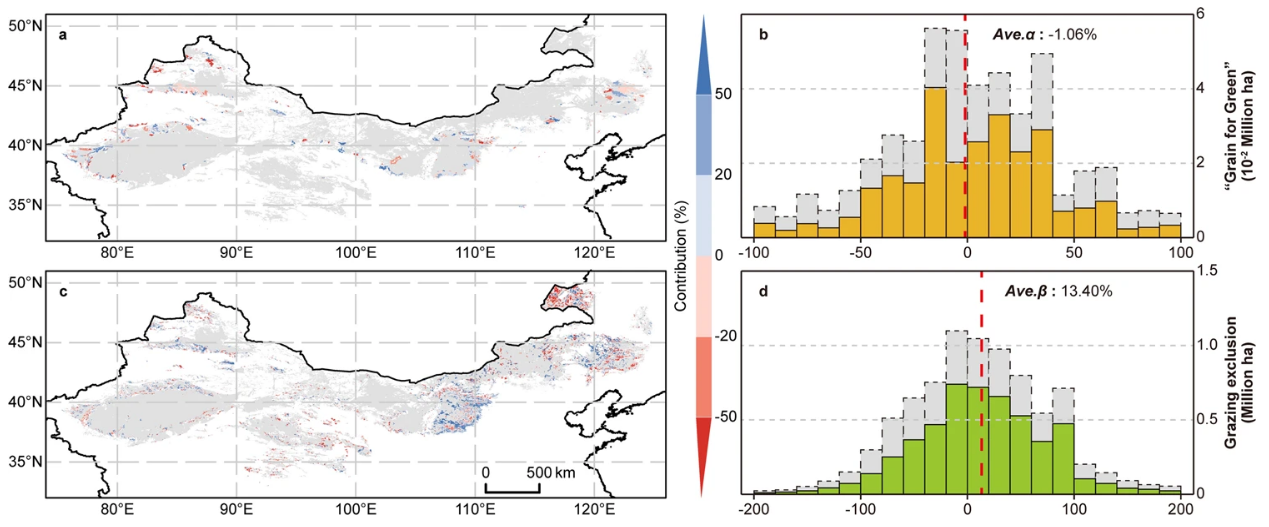Unintended consequences of combating desertification in China
2023
Authors
Wang, X., Ge, Q., Geng, X., Wang, Z., Gao, L., Bryan, B.A., Chen, S., Su, Y., Cai, D., Ye, J-S., Sun, J., Lu, H., Che, H., Hong, C., Liu, H., Liu, B., Dong, Z., Cao, S., Hua, T., Chen, S., Sun, F., Luo, G., Wang, Z., Hu, S., Xu, D., Chen, M., Li, D., Liu, F., Xu, X., Han, D., Zheng, Y., Xiao, F., Li, X., Wang, P., and Chen, F.Abstract
Since the early 2000s, China has carried out extensive “grain-for-green” and grazing exclusion practices to combat desertification in the desertification-prone region (DPR). However, the environmental and socioeconomic impacts of these practices remain unclear. We quantify and compare the changes in fractional vegetation cover (FVC) with economic and population data in the DPR before and after the implementation of these environmental programmes. Here we show that climatic change and CO2 fertilization are relatively strong drivers of vegetation rehabilitation from 2001-2020 in the DPR, and the declines in the direct incomes of farmers and herders caused by ecological practices exceed the subsidies provided by governments. To minimize economic hardship, enhance food security, and improve the returns on policy investments in the DPR, China needs to adapt its environmental programmes to address the potential impacts of future climate change and create positive synergies to combat desertification and improve the economy in this region.
Fig. 1: The contributions of desertification-combating practices to vegetation restoration

